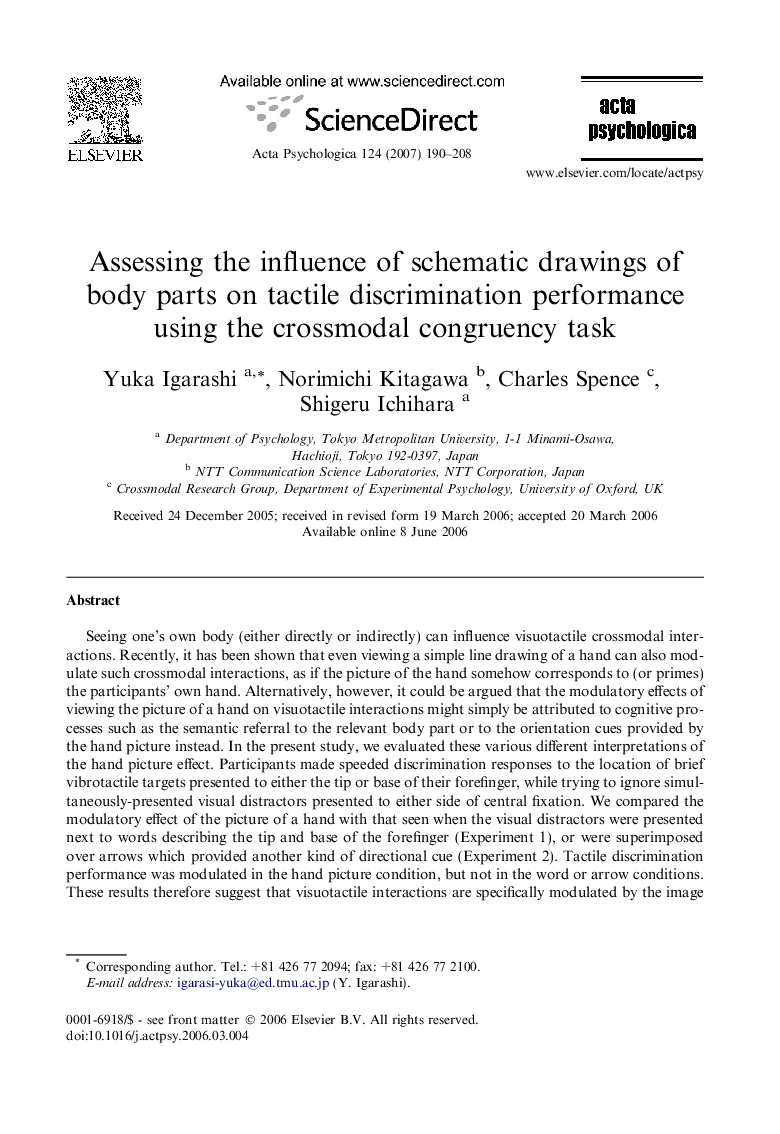| Article ID | Journal | Published Year | Pages | File Type |
|---|---|---|---|---|
| 920519 | Acta Psychologica | 2007 | 19 Pages |
Seeing one’s own body (either directly or indirectly) can influence visuotactile crossmodal interactions. Recently, it has been shown that even viewing a simple line drawing of a hand can also modulate such crossmodal interactions, as if the picture of the hand somehow corresponds to (or primes) the participants’ own hand. Alternatively, however, it could be argued that the modulatory effects of viewing the picture of a hand on visuotactile interactions might simply be attributed to cognitive processes such as the semantic referral to the relevant body part or to the orientation cues provided by the hand picture instead. In the present study, we evaluated these various different interpretations of the hand picture effect. Participants made speeded discrimination responses to the location of brief vibrotactile targets presented to either the tip or base of their forefinger, while trying to ignore simultaneously-presented visual distractors presented to either side of central fixation. We compared the modulatory effect of the picture of a hand with that seen when the visual distractors were presented next to words describing the tip and base of the forefinger (Experiment 1), or were superimposed over arrows which provided another kind of directional cue (Experiment 2). Tactile discrimination performance was modulated in the hand picture condition, but not in the word or arrow conditions. These results therefore suggest that visuotactile interactions are specifically modulated by the image of the hand rather than by cognitive cues such as simply semantic referral to the relevant body sites and/or any visual orientation cues provided by the picture of a hand.
